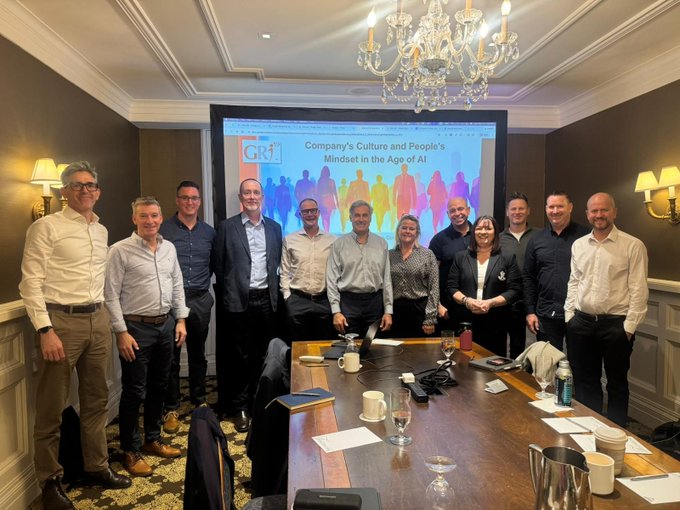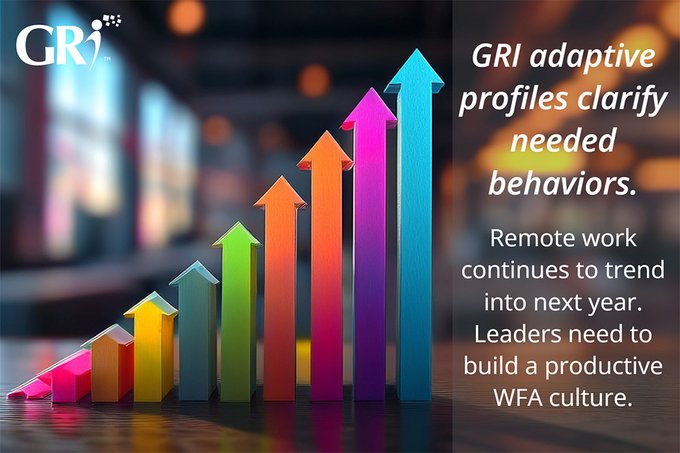Radical Innovation à la Steve Jobs
Posted by Frederic Lucas-Conwell

How to Incite Radical Innovation
à la Steve Jobs
When you hear anecdotes from Apple employees or from external collaborators, you inevitably hear about Steve Jobs' "Reality Distortion Field". It's a term his colleagues borrowed from a Star Trek episode to define his combination of charisma and an uncanny ability to convince people to do things they believed couldn't be done.
As an example, take the Gorilla Glass story, told to Walter Isaacson for his recent biography of Steve Jobs: When they were developing the iPhone, Steve wanted a tough, scratch-proof glass screen instead of plastic. He met with the CEO of Corning, Wendell Weeks, who said, "We created a process in the 60s that makes something we called Gorilla Glass." Steve said, "In six months I want enough to make a million iPhones." Wendell explained that they'd never actually produced Gorilla Glass, and that they didn't have the manufacturing capacity for it. Steve said to him, "Don't be afraid. You can do it."
Wendell, unfamiliar with the Reality Distortion Field, tried to explain the engineering challenges, but Steve was having none of it. He simply said, "Yes you can do it. Get your mind around it. You can do it." And they did. In less than six months.
Understanding Steve Jobs Through the GRI Profile
Steve Jobs is often the first one we think of when it comes to speaking about personality characteristics that are consistent and deterministic of behavior.
We wish Steve Jobs had taken the GRI survey in his time, but so much has been written about him, and his character was so distinct, public and visible, that we may be pretty close in assessing it. During the GRI seminar we ask participants to imagine Steve's "Natural" profile, which looks like the one below. (Learn more about reading a GRI profile at the end of this article.)

What does it entail to be a radical innovator and a successful entrepreneur the Jobs way? Learning from Steve Jobs' assumed GRI behavior profile can help us understand, empower, work with, manage, support and invest in those with similar profiles. It also has profound implications for companies that want to infuse their culture with innovation.
Radical Innovation à la Jobs
New ideas disturb established ideas, established products and established markets. Radical innovations produce friction and radical innovators like Jobs are not deterred by it – on the contrary, these innovators relish the battle.
People who share Steve Jobs' profile are pugnacious, argumentative and belligerent when facing challenges and when other people stand in their way. They are tough-minded and reckless with a direct communication style. Radical ideas are opportunities to prove their drive to succeed and win.
They pursue their goals aggressively, dominate their environment and the people around them, and make their decisions with authority, even when they are unpopular. They look ahead into the unknown without fear, expressing their opinions with extreme confidence. What is already known is of little interest. They don't get discouraged easily when facing adversity.
Leaders with this profile are naturally stimulated by challenging the status quo and initiating changes with a strong sense of urgency. They innovate for the satisfaction of solving big problems and to disturb the conventional. Their rebellion may not succeed. But something radically different, eventually perceived as radically innovative, will emerge.
Taking Innovation to the Market
Being creative and innovative is not just a matter of coming up with unique ideas, being a genius, or getting a great education. It requires another form of energy to take the innovation to the market, pitch it to investors or sell it to clients – all reliant on personality.
Being innovative also means refining the innovation to make it work for clients, and to sell it, deliver it on time and provide support. It requires empathy with potential clients, proactively adjusting the product or service, its production, and scaling it in the market at high speed. An idea by itself is not innovative, until it's accelerated through all the other aspects of the innovation process, and has been recognized as such by clients, potential investors and Wall Street.
Taking a disruptive, radical idea out to the market requires persistence, continuous learning and a focus on selling, organizing and leading in tough times. One has to deal with insecurity, the unknown and rejections. Such qualities are naturally found in the personality of Steve Jobs and anyone with the above GRI profile.
Innovation Requires Complex Teams & Supportive Environments

The influence of the team and the environment are often minimized when analyzing innovation and entrepreneurship. Yet these are both critical elements in innovation.
Entrepreneurial teams are composed of a mix of very different profiles. They have to be, since so many different tasks - such as production, accounting, sales and client services - need to be performed in so many different ways and require very distinct characteristics.
Steve Jobs' success was not his alone, but also that of the amazing people who worked with him, bringing incredible resources and support. The contact with radical innovators like Jobs is rough, requiring confidence to accept a direct and often brutal communication style, and to regularly face the new, risky and unknown. Building a team who accepts and deals with those individual differences is an important part of success.
The Silicon Valley environment where Jobs was raised and in which he started Apple, is also an important factor. The financial, legal and work-related systems are in place for providing the capital, IP protection and working conditions needed to grow businesses at high speed. The educational system rewards novel ideas and risk taking at any age. Positive reinforcement is the norm. There is no place so attractive to radical innovators with the above GRI profile than Silicon Valley.
For Companies: 4 Tips to Encourage Innovation
Since large organizations by nature have many rules and tend to avoid risk, they also tend to scare away the radical innovators.
Hubs for entrepreneurs and large companies interested in radical innovation need to:
- Reward more aggressive innovation styles. Actively support this personality type in your organization. This will not happen by chance, and, as we've noted, it isn't always easy. There are tendencies to hire people who fit with the culture, but are not necessarily a fit for radical innovation at high speed in highly competitive spaces. If this style is not represented in the founding team, at least make sure it's in sales and business development.
- Give typical entrepreneurs freedom. Make sure your entrepreneurial types are free to think and act, along with being accountable for what is invested in their projects. If you look for innovation, you must not force structures and your ideas upon the entrepreneurs, but let go of the reins and allow them to run.
- Look at the whole innovation process. Not just the birth of the idea, but sales, production and all the obstacles that will need to be removed on the way. This is where you'll see that it's critical that more than one person succeed, and that some managerial and leadership skills are needed.
- Provide the resources to grow. Whether financial, legal, technical or human, the company will need the best resources when it's time to grow.
Killing radical innovation is easy: Remove autonomy, micro-manage, ask for frequent reporting and assign entrepreneurs to repetitive administrative tasks. This is why radical entrepreneurs quit large corporations, or never even join them, not because they are not adequately compensated but because they look for freedom and autonomy to prove themselves.
With the implicit assumptions we make about people, we often jump to conclusions about a person's innovation and entrepreneurship style; we are all humans after all. It's easy to confuse traits and misinterpret behavior, leading to false expectations, bad hiring and promotion decisions, and a waste of time and money for both the person and the company.
To attract, nurture and grow innovators requires that you first understand them more accurately. The best way to do that is by assessing their, and your, behavioral profile. The GRI survey quickly provides this information and offers insight on what to do to bring out the best in people.
Based on 20 years of research and used by small to large companies around the world, the GRI helps you to better understand your needs, job applicants, individual employees and teams, so that you can better succeed at fostering innovation and entrepreneurship.
GRI Profile Explained
The GRI profile is a visual representation of one's behavior and emotional response to the environment. It is generated from the GRI 2-questions survey. Each profile includes four big personality factors (the color-coded points) connected with lines. We call these Factor 1, Factor 2, Factor 3 and Factor 4.

The factors correspond to different drives and motivations. The four factors in each graph are plotted in relation to an average (the black triangle at the bottom middle of the graph). They are separated from the average by a distance calculated in standard deviation as indicated below.

← low side high side →
Each factor is more or less to the left (low side) or the right (high side) of the average. The more distant a factor is from the average the more intense it is. The factors have proven their reliability, validity and consistency over the years, looking at both people and their organizations. The four factors are briefly described below.
- Factor 1 shows how one needs and is motivated to impact the environment and dominate when the factor displays on the high side, versus be consensual and modest when the factor displays on the low side.
- Factor 2 shows how one needs and is motivated to socialize and be in contact with people on the high side, versus be remote and analytically distant when the factor displays on the low side.
- Factor 3 shows how one needs and is motivated to be in a calm and methodical environment on the high side versus be free to change priorities and be spontaneous on the low side.
- Factor 4 shows how one needs and is motivated to be formal and in need of rules to follow on the high side versus be informal and casual on the low side.
The measurement of each factor impacts the understanding of the other three. Ultimately, the four factors are interpreted together in relationship with each other, providing a broad yet subtle understanding of how the person acts, is motivated, and adapts to the environment.

The GRI Profile includes the Naturally expressed behavior, the perceived Role, and the Effective behavior that will most probably show at work (see the example here).
It does not provide any information about competencies, skills or interests, but instead how these characteristics are developed, communicated, learned, delegated, etc.
The GRI is used in a wide range of applications including recruitment, team building, leadership development and organizational development.
Please Contact Us to learn more.
Latest Articles
Groupama Successful Transformation in Romania: The GRI, Catalyst for Profound Change
The history of Groupama in Romania is an eloquent testament to resilience, strategic vision, and the transformative impact of innovative management tools. Arriving at the...
Hybrid Work: A Management Revolution
The COVID-19 pandemic has acted as an unprecedented catalyst, radically transforming our approach to work. What was once a marginal practice has become the norm for many...
Leadership 3.0: Objective Insights for People-Centric Leaders
Steve, a brilliant entrepreneur, poured his heart into his work. His team at "Innovatech" was on the brink of a major breakthrough, a new app that promised to revolutionize...



